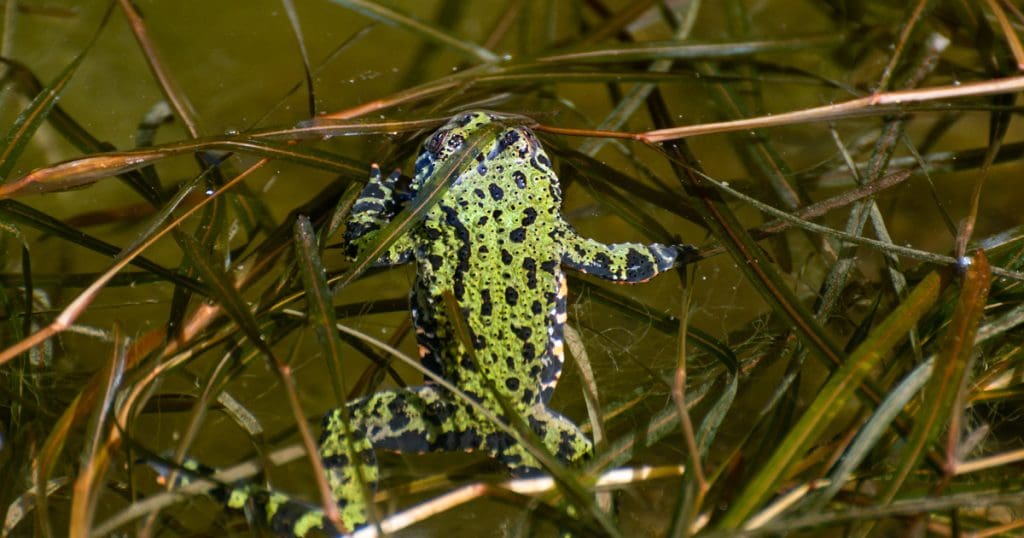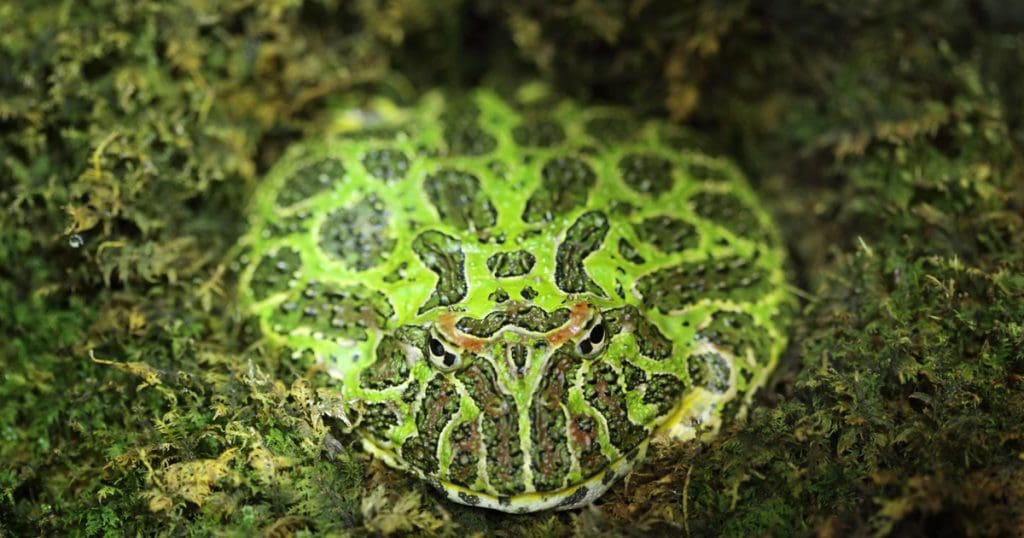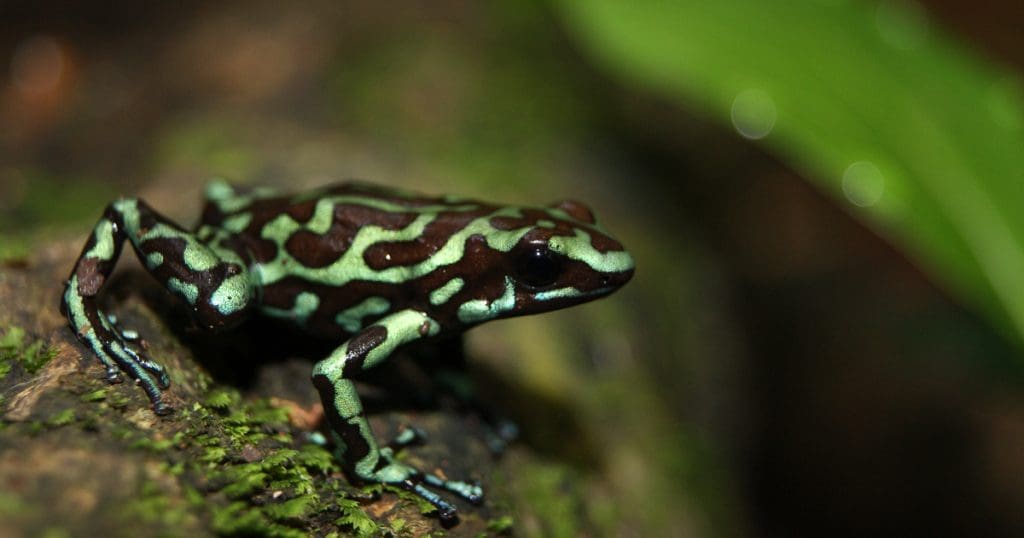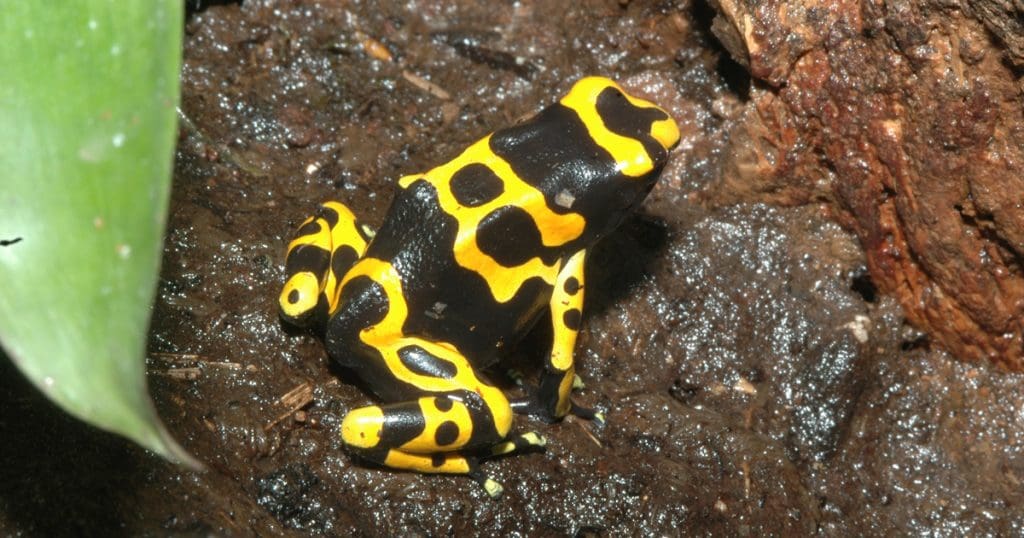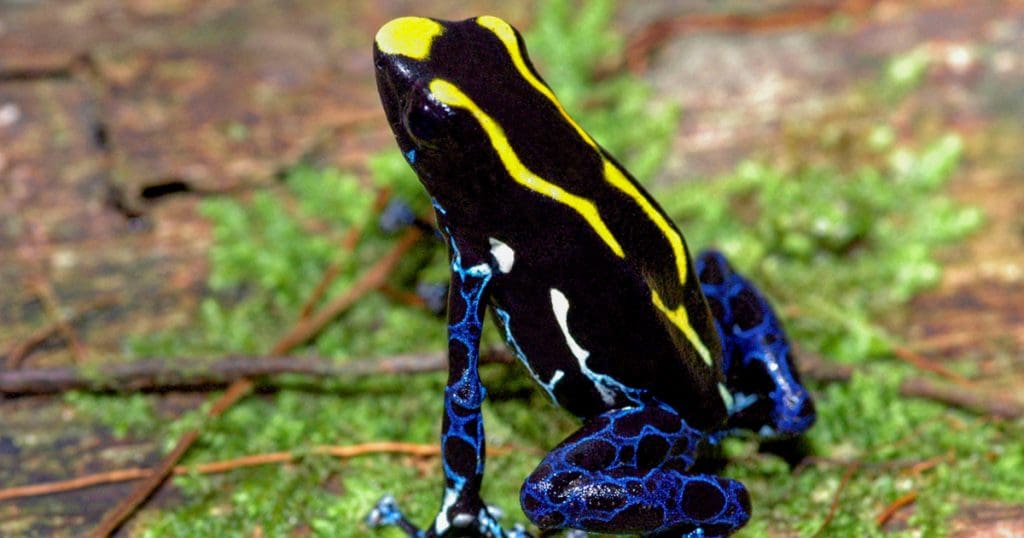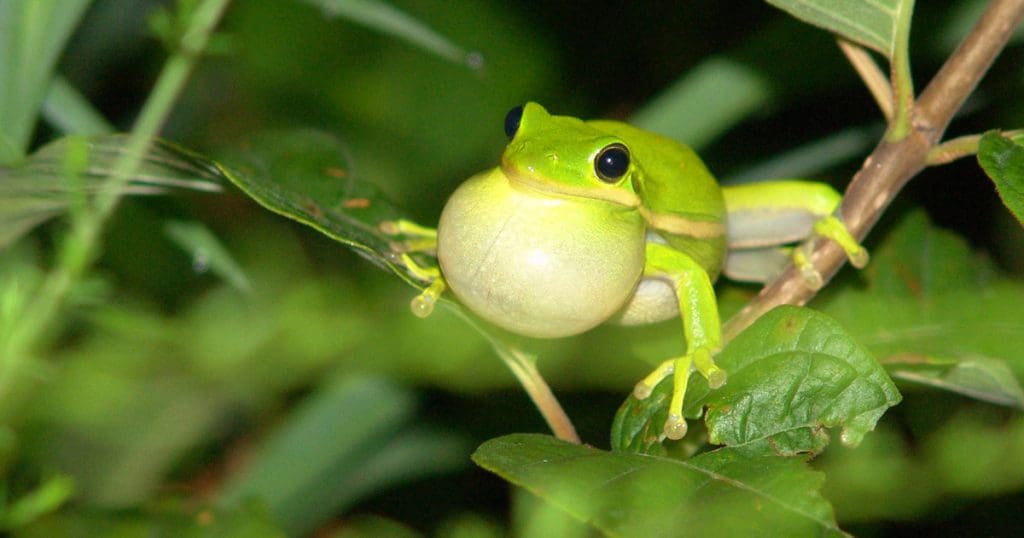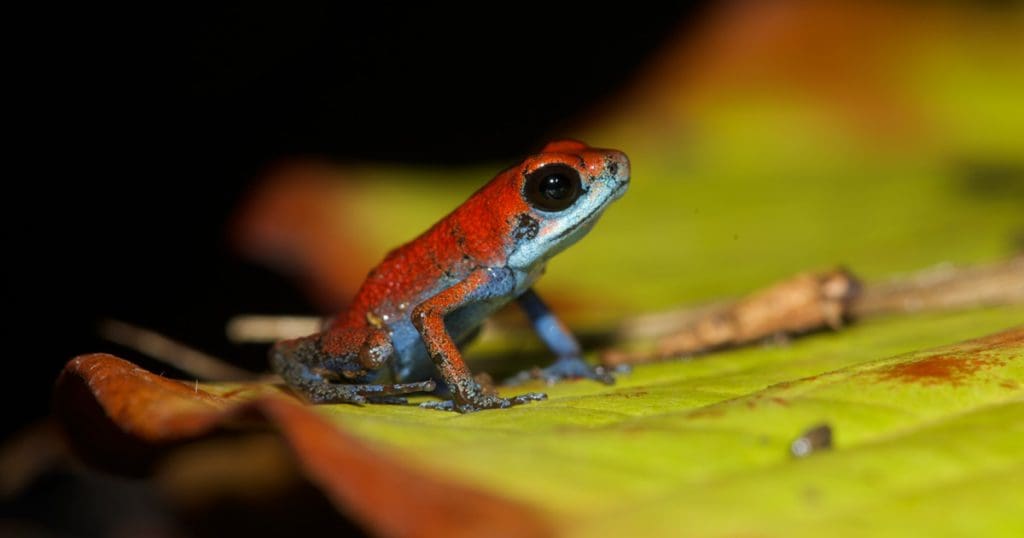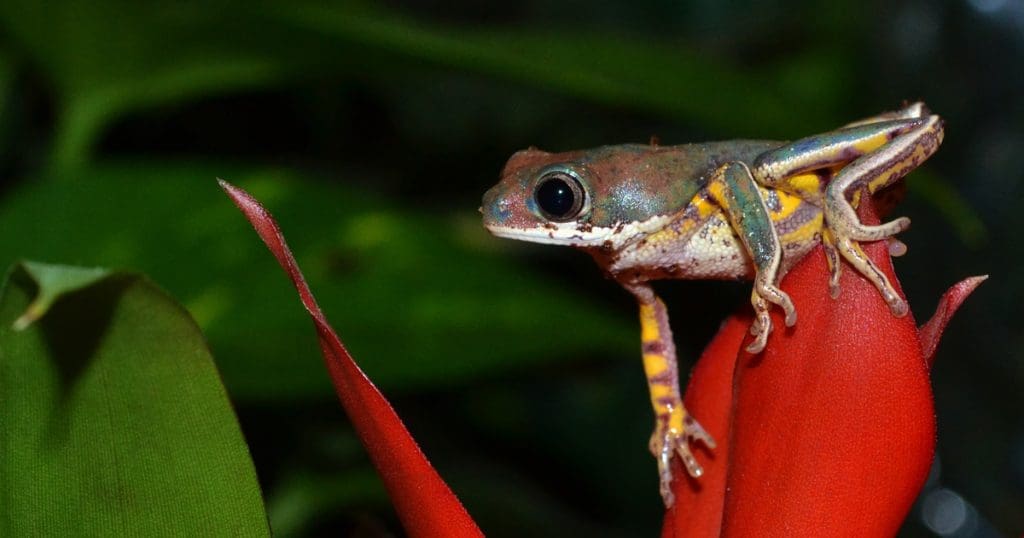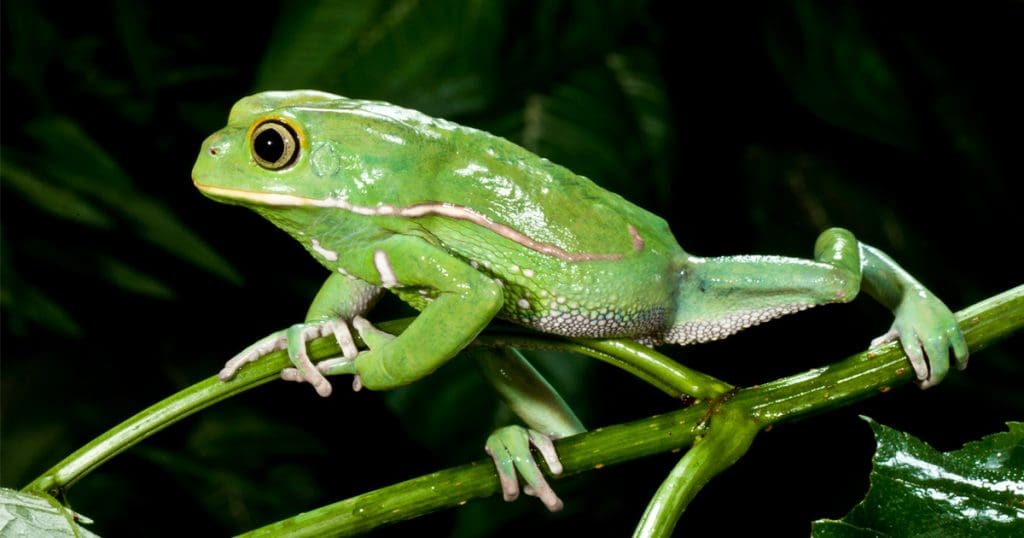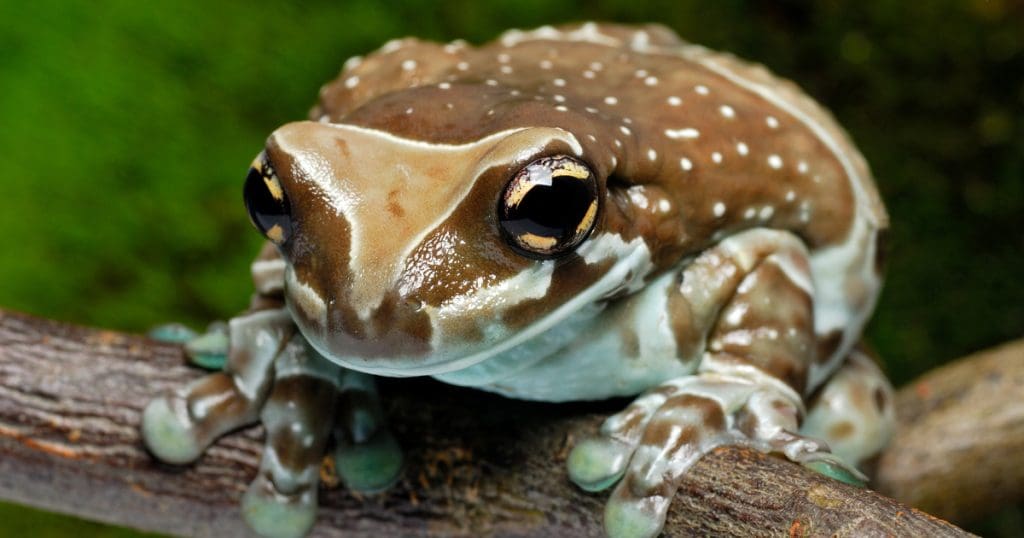
Frogs & Toads
If you’re a passionate amphibian enthusiast or a first-time owner, our comprehensive care guides are here to leap to your rescue. Discover expert advice, tips, and insights on nurturing these fascinating creatures, ensuring their health and happiness. From terrarium setup to dietary needs, our care guides are your go-to resource for creating a ribbiting environment for your frogs and toads. Dive into our care guides and hop through our recommendations.
“Dive into our care guides and hop through our recommendations.”
Agalychnis callidryas
Red-Eyed Tree Frogs are native to Mexico, Belize, Guatemala, Honduras, Nicaragua, Costa Rica, Panama and even occur in some isolated populations in Colombia. They primarily prefer tropical rainforests and humid lowland forests but can sometimes be found in humid forests on premontane slopes up to 1250 m above sea level.
The Red-Eyed Tree Frog's common name refers directly to the beautiful, big red eyes that these frogs show at night. Red-Eyed Tree Frogs are sometimes referred to as Red-Eyed Leaf Frogs as well because of their arboreal lifestyle, sleeping on the back of the leaves in the trees and shrubs that they live in.
Red-Eyed Tree Frogs are stunning, long-lived and relatively “easy-to-care-for” amphibians. Their engaging personalities, their huge bright red eyes, bright green dorsal color with blue striped sides, and their bright orange webbed feet, make them one of the most stunning display animals for both the beginning reptile enthusiast as well as for the advanced hobbyist.
Red-Eyed Tree Frogs are a fairly social species and are best enjoyed when kept in small groups of 4 to 8 animals. The interaction between the animals in these small groups increases the viewing pleasure but also stimulates their mating behavior.
Red-Eyed Tree Frogs have been captive bred in the USA and Europe for more than 30 years. They are available in various local color variations and even an "albino type" morph with yellowish dorsal coloration and silver eyes called "lutino" is sometimes offered.
Bombina orientalis
Fire-Bellied Toads are endemic to Northeastern China, Korea, and the Khabarovsk and Primorye regions in Russia. Despite their common name Fire-Bellied “Toad”, these cute amphibians are actually frogs. As the name already indicates, their bellies are brightly colored in orange, yellow or red. These strikingly colored bellies are actually a warning sign (called aposematic coloration) to inform predators that they are distasteful and should not be eaten.
Fire-Bellied Toads are hardy, long-lived and “easy-to-care-for”. Their semi-aquatic lifestyle, their exposure of belly colors as they float at the water surface, and their somewhat clumsy “amusing” motions make them appealing display animals for both the beginning reptile enthusiast as well as for the advanced hobbyist.
Fire-Bellied Toads are a fairly social species and are best enjoyed when kept in small groups of 4 to 8 animals. The interaction between the animals in these small groups increases the viewing pleasure but also stimulates their natural- and mating behavior.
Ceratophrys ornata
Ornate Horned Frogs are hardy, long-lived, and “easy-to-care-for” amphibians. These large, terrestrial, burrowing frogs are native to South America and are characterized by more or less developed fleshy horns projection above the eyes.
The Ornate Horned Frog is only one of eight species of Horned Frogs:
Ornate Horned Frog (Ceratophrys ornata)
Cranwell’s Horned Frog (Ceratophrys cranwelli)
Suriname Horned Frog (Ceratophrys cornuta)
Brazilian Horned Frog (Ceratophrys aurita)
Caatinga Horned Frog (Ceratophrys joazeirensis)
Venezuelan Horned Frog (Ceratophrys calcarata)
Pacific Horned Frog (Ceratophrys stolzmanni)
Ecuadorian Horned Frog (Ceratophrys testudo)
The Ornate Horned Frog is one of the most commonly kept and bred Ceratophrys species. Horned Frogs are colorful and rather easy to breed which makes these fun frogs an ideal species for both the beginning amphibian enthusiast as well as for the advanced hobbyist. Captive-bred youngsters are readily available and come in a variety of colors & patterns. Next to the more common color morphs like Pattern-less Green, Strawberry, Sunburst, Albino or Chocolate, there are even hybrid morphs available called Fantasy Frogs.
Horned Frogs are commonly called Pac Man Frogs because their rounded shape and huge mouth resemble the animated character in the video game. Just like in the Pac Man game, the Horned Frogs devour everything that crosses their path.
Cruziohyla sylviae
Sylvia's Tree Frogs are native to Costa Rica, Honduras, Nicaragua and Panama. They prefer primary tropical rainforests located at low to mid elevations, up to 750m above sea level. The type locality of the Sylvia's Tree Frog is Guayacán in the province of Limón, Costa Rica.
The Sylvia's Tree Frog's common name refers to the 3-year-old granddaughter of the Herpetologist Andrew Gray, who described the species in 2018.
Sylvia's Tree Frogs are stunning, long-lived and relatively “easy-to-care-for” amphibians. Their engaging personalities, bright green dorsal color, their orange with black tiger striped flanks, and their bright orange webbed feet and inner thighs, make them one of the most stunning display animals for both the beginning reptile enthusiast as well as for the advanced hobbyist.
Sylvia's Tree Frogs live an arboreal lifestyle, sleeping on the back of the leaves in the trees and shrubs that they live in.
Sylvia's Tree Frogs are a fairly social species and are best enjoyed when kept in small groups of 4 to 8 animals. The interaction between the animals in these small groups increases the viewing pleasure but also stimulates their mating behavior.
Sylvia's Tree Frogs have been captive bred in the USA and Europe for several years now, but were mostly mistakenly named Cruziohyla calcarifer, until Andrew Gray described the species as Cruziohyla sylviae.
Dendrobates auratus
The green-and-black poison dart frog, or Dendrobates auratus, is a captivating amphibian native to southeastern Nicaragua, Costa Rica, Panama, and northwestern Colombia. Recognizable for its long lifespan, the species is also notable for being relatively easy to care for, making it an appealing choice for hobbyists and researchers alike.
Its vivid mint-green base coloration punctuated with black splotches sets it apart visually. However, this species displays a fascinating trait known as color polymorphism. Individuals can exhibit varying shades, with base colors ranging from green to blue, yellow, and even white. The darker splotches, a characteristic signature of the species, vary from bronze to black.
Just like other poison dart frogs, their bright colors serve a crucial evolutionary purpose. They exhibit aposematic coloration, wherein the vibrant hues deter potential predators by signaling the frog's toxic nature, discouraging them from considering the frog as prey.
Primarily terrestrial, green-and-black poison dart frogs are bottom dwellers, spending most of their time navigating through the leaf litter blanketing the forest floor. However, they frequently venture upwards, climbing vines and trees in their tropical habitats.
These frogs are attractive display animals for beginner and advanced amphibian enthusiasts. Their stunning coloration, coupled with their relative ease of care, make them popular choices for terrarium inhabitants. They are best kept as pairs or in groups with most males, as females may exhibit aggressive behavior towards each other when vying for a specific male's attention.
Initially, these creatures may exhibit shy behavior. However, when housed in a well-planted terrarium offering plenty of hiding spots, they quickly become more active, adding a dynamic element to their display. With their intriguing behaviors, rich color variation, and their adaptability, Dendrobates auratus offer a unique glimpse into the vibrant world of amphibians.
Dendrobates leucomelas
Yellow-banded poison dart frogs are endemic to the western Guiana region and the northeastern Amazon basin of South America: southeastern Venezuela and small, adjacent parts of Colombia, Guyana and northern Brazil. They are long-lived, intriguing and “easy-to-care-for”. Because of their typical color combination consisting of a yellow to orange base color with contrasting black splotches and bands, they are also sometimes referred to as "Bumblebee dart frogs".
Like other poison dart frogs, their bright colours are actually a warning sign (called aposematic coloration) to inform predators that they are poisonous and should not be eaten.
Yellow-banded poison dart frogs live a mainly terrestrial lifestyle: they are bottom dwellers that spend most of their time on and in between the leaf litter that covers the forest floor. They do, however, also frequently climb vines and trees.
Their amazing colours and the fact that they are easy to care for make them appealing display animals for both the beginning amphibian enthusiast as well as for the advanced hobbyist. Yellow-banded poison dart frogs are best kept as pairs or groups consisting of a majority of males: females might express dominant and aggressive behaviour towards other females when there is a conflict of interest in a specific male.
Dendrobates tinctorius
Dyeing poison dart frogs are endemic to the eastern part of the Guiana Shield: French Guiana, southeastern Guyana, southwestern Suriname, and a relatively small adjacent part of northern Brazil.
The species is known for its extensive colour and pattern polymorphism, both within and among populations. The frog's pattern is made up of a black base color and a varying combination of bands, splotches and dots in different shades of blue, yellow, white, and even orange. Like other poison dart frogs, their bright colours are actually a warning sign to inform predators that they are poisonous and should not be eaten (aposematic coloration).
Dyeing poison dart frogs live a terrestrial lifestyle: they are bottom dwellers that spend most of their time on and in between the leaf litter that covers the forest floor. They do, however, also frequently climb vines and trees.
Their amazing colours, curious nature, and the fact that they are easy to care for makes them appealing display animals for both the beginning amphibian enthusiast as well as for the advanced hobbyist. Dyeing poison dart frogs are best kept as pairs or trios consisting of two males and one female: females might express dominant and aggressive behaviour towards other females when there is a conflict of interest in a specific male.
Hyla cinerea (Dryophytes cinereus)
American Green Tree Frogs are native to the Southeastern United States roughly from Eastern Virginia to Florida in the East and from Central Texas all the way to the West. There's also records of introduced populations in Puerto Rico and even some invasive American Green Tree Frogs have been noticed in Hawaii.
They can be primarily found around lakes, ponds, swamps, streams and in wetlands. They prefer habitats with floating vegetation, reeds & grasses, and shrubs with branches overgrowing the riparian zone. American Green Tree Frogs easily adapt to various habitats and can be found in urban environments, like garden ponds in private gardens, hotel gardens and industrial complexes.
American Green Tree Frogs are hardy, long-lived and “easy-to-care-for” amphibians. Their engaging personalities, their bright yellow-green back and cream-white lateral stripe running from just under their big golden eyes all the way to their groin, make them appealing display animals for both the beginning reptile enthusiast as well as for the advanced hobbyist.
American Green Tree Frogs are a fairly social species and are best enjoyed when kept in small groups of 4 to 8 animals. The interaction between the animals in these small groups increases the viewing pleasure but also stimulates their mating behavior.
The American Green Tree Frog has been successfully bred in Europe and the USA for decades. American Green Tree Frogs are available as wild-caught specimen as well as captive-bred. We do recommend starting with captive-bred specimen, so you know their age and can rest assured that the youngsters are healthy.
Oophaga pumilio
Strawberry poison dart frogs are endemic to Caribbean rainforests in Central America; from eastern central Nicaragua through Costa Rica to northwestern Panama.
The species is known for its extensive colour and pattern polymorphism, both within and among populations. The frog's look varies from a simple plain colour to a base colour covered with different shapes of dots, splotches and/or stripes, all of this with an endless variety of shades, such as blue, green, red, orange, yellow, black, brown and even white. Like other poison dart frogs, their bright colours are actually a warning sign to inform predators that they are poisonous and should not be eaten (aposematic coloration). Due to their colourful appearance and charismatic nature, they are often the subject of ecotourism related activities.
Strawberry poison dart frogs live a mainly terrestrial lifestyle: they are bottom dwellers that spend most of their time on and in between the leaf litter that covers the forest floor. They do, however, also frequently climb vines and trees.
Their amazing colours, charismatic nature and interesting breeding behaviour makes them appealing display animals. Strawberry poison dart frogs are best kept as pairs: females might express dominant and aggressive behaviour towards other females when there is a conflict of interest in a specific male.
Phyllomedusa hypochondrialis (Pithecopus hypochondrialis)
Tiger-Legged Monkey Frogs are native to Colombia, Venezuela, Suriname, Guyana & French Guyana, Brazil, Bolivia and Paraguay. They prefer tropical & subtropical dry and moist forests but can also be found in seasonally flooded grasslands. The type locality of the Tiger-Legged Monkey Frog referenced in the original description is Suriname.
The Tiger-Legged Monkey Frog's common name refers directly to the striped tiger markings on the inside of the frog's thighs. These frogs really deserve their common name as being Monkey Tree Frogs. Rather than jumping like other frogs do, they prefer to use their long, skinny legs to slowly walk in the trees in a monkey-like fashion. They're also one of the only frogs with opposable thumbs, allowing them to use their monkey-like "hands" to get a firm grip on the thin branches, while walking through the vegetation that they live on.
Tiger-Legged Monkey Frogs are stunning, long-lived and “easy-to-care-for” amphibians. Their engaging personalities, their bright green dorsal color, their orange with black tiger striped inner thighs and partially orange with irregular black stripes and blotches on the flanks, make them one of the most stunning display animals for both the beginning reptile enthusiast as well as for the advanced hobbyist.
Tiger-Legged Monkey Frogs live an arboreal lifestyle, sleeping on the back of the leaves in the trees and shrubs that they live in.
Tiger-Legged Monkey Frogs are a fairly social species and are best enjoyed when kept in small groups of 4 to 8 animals. The interaction between the animals in these small groups increases the viewing pleasure but also stimulates their mating behavior.
Tiger-Legged Monkey Frogs have been captive bred in the USA and Europe for decades. The somewhat larger cousin of the Tiger-Legged Monkey Frog (Phyllomedusa hypochondrialis), the Super Tiger Leg Monkey Tree Frog (Phyllomedusa tomopterna) is also being captive bred, but to a much lesser extent.
Phyllomedusa sauvagii
Waxy Monkey Tree Frogs are native to the South American rainforests, humid montane forests, and dry forests in the Chacoan region of eastern Bolivia, northern Paraguay, Mato Grosso do Sul of central Brazil, and Northern Argentina. They primarily prefer moist and semi-moist forest habitats but can also cope with drier environments.
They are sometimes referred to as Chacoan Monkey Leaf Frogs as well, because of the Chaco Region they originate from, and because the females lay their eggs on leaves suspended over water, which they then fold to hide the eggs and protect them from drying out.
Waxy Monkey Tree Frogs are hardy, long-lived, docile and “easy-to-care-for” amphibians. Their engaging personalities, their waxy green skin, their adorable smile and big golden eyes make them appealing display animals for both the beginning reptile enthusiast as well as for the advanced hobbyist.
Waxy Monkey Tree Frogs are very tranquil and get accustomed to handling by their caretaker fairly easily. For the well-being of the frogs, however, we do not recommend excessive handling. Waxy Monkey Tree Frogs can be kept individually or in small groups of 2 - 8 animals. The interaction between the animals in these small groups increases the viewing pleasure but also stimulates their mating behavior.
Waxy Monkey Tree Frogs have been captive bred in the USA and Europe for more than 25 years.
Ranoidea caerulea (Litoria caerulea)
White’s Tree Frogs are native to Australia, Indonesia and Papua New Guinea. There are also some introduced populations in New Zealand and South Florida, USA. They primarily prefer moist and semi-moist forest habitats but can also cope with drier environments.
They are sometimes referred to as Dumpy Tree Frogs as well because of their somewhat chubby, sleepy appearance.
White's Tree Frogs are hardy, long-lived, docile and “easy-to-care-for” amphibians. Their engaging personalities, bluish-green color and milky white bellies, adorable smile and big golden eyes make them appealing display animals for both the beginning reptile enthusiast as well as for the advanced hobbyist.
White’s Tree Frogs are very tranquil and get accustomed to handling by their caretaker fairly easily. Dumpy Tree Frogs can be kept individually or in small groups of 2 – 8 animals. The interaction between the animals in these small groups increases the viewing pleasure but also stimulates their mating behavior.
White’s Tree Frogs have been captive bred in the USA and Europe for more than 30 years. They are available in various color morphs, green, blue, Snowflake (covered in white spots).
Trachycephalus resinifictrix
Amazon Milk Frogs are native to Colombia, Equador, Peru, Bolivia, Venezuela, Suriname, Guyana & French Guyana and Brazil. They prefer tropical primary rainforests up to an elevation of 450m above sea level. The type locality of the Amazon Milk Frog referenced in the original description is Maracanã River in Pará, Brazil.
The Amazon Milk Frog's common name refers to the milky white secretions that these frogs release when they feel threatened. This behavior, however, is rarely seen in captive Milk Frogs. Trachycephalus resinifictrix is also sometimes referred to as the Mission Golden-eyed Tree Frog because the pupil in their golden iris resembles a black Maltese cross.
Amazon Milk Frogs are adorable, long-lived and “easy-to-care-for” amphibians. Their engaging personalities, the bluish-green color with distinct brown to black pattern, their blueish lips and toe pads and big golden eyes make them appealing display animals for both the beginning reptile enthusiast as well as for the advanced hobbyist.
Amazon Milk Frogs live an arboreal lifestyle, sleeping on the branches or in bark crevices and hollow tree trunks, always in the vicinity of the water filled tree holes they use for their reproductive cycle.
Amazon Milk Frogs are a fairly social species and are best enjoyed when kept in small groups of 4 to 8 animals. The interaction between the animals in these small groups increases the viewing pleasure but also stimulates their mating behavior.
Amazon Milk Frogs have been captive bred in the USA and Europe for more than 20+ years, and captive bred youngsters are readily available in reptile stores as well as from breeders.
Stay up on all things exo terra.
"*" indicates required fields


